Found only in Antarctica and Greenland, ice sheets are enormous masses of glacial ice and snow that cover over 50,000 square kilometers. The ice sheet on Antarctica is over 4200 meters thick in some areas, covering nearly all of the land features except the Transantarctic Mountains that poke up above the ice.
Ice shelves occur when ice sheets extend over the sea, floating on the water. In thickness they range from a few hundred meters to over 1000 meters. Ice shelves surround the entire continent of Antarctica. The largest shelf is the Ross Ice Shelf , covering over 500,000 square kilometers.
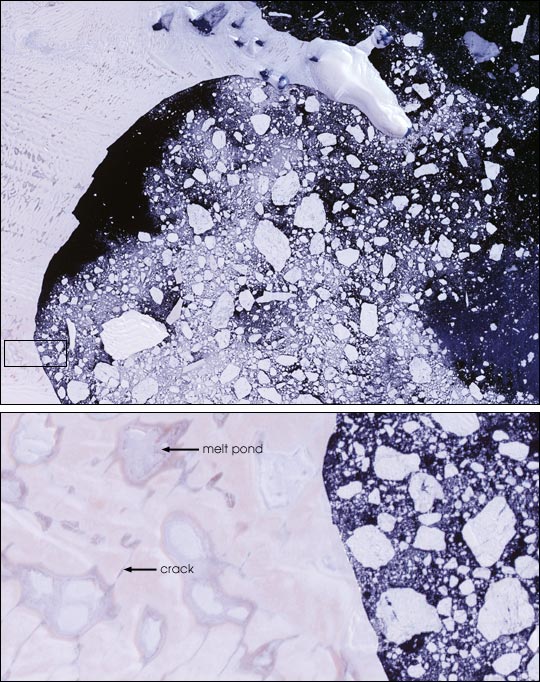
Ice caps are miniature ice sheets, covering less than 50,000 square kilometers. They form primarily in polar and sub-polar regions, occupying high and relatively flat regions.
These glaciers develop in high mountainous regions, often flowing out of icefields that span several peaks or even a mountain range. The largest mountain glaciers are found in Arctic Canada, Alaska, the Andes in South America, the Himalayas in Asia, and on Antarctica.
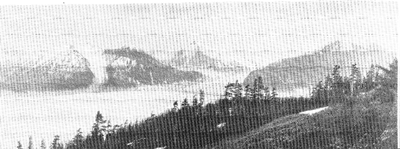
The Chickamin Glacier in British Columbia, Canada, is a typical mountain glacier. Several glaciers flow into it, and the landscape is nearly covered with ice and snow.(R.M. Wilson photograph, 1924, DC-A for Glaciology, University of Colorado, Boulder, Colorado.)
Commonly originating from mountain glaciers or ice fields, these glaciers spill down valleys, looking much like giant tongues. Valley glaciers tend to be very long, often flowing down beyond the snow line, sometimes reaching sea level.
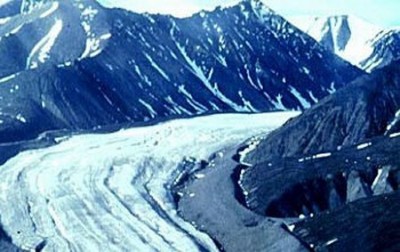
http://www.solcomhouse.com/icecap.htm
Piedmont glaciers occur when steep valley glaciers spill into relatively flat plains, where they spread out into bulb-like lobes. The Malaspina Glacier in Alaska, covering over 5,000 square kilometers is one of the most famous examples of this type of glacier.
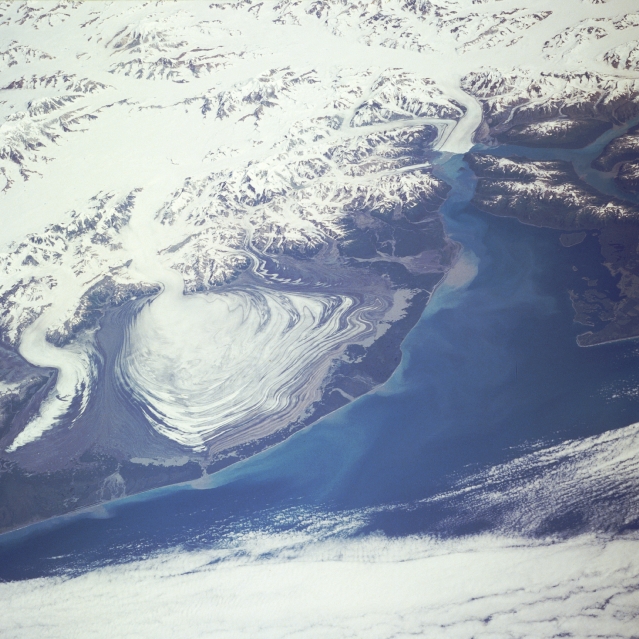
http://www.solcomhouse.com/icecap.htm
Cirque Glaciers are named for the bowl-like hollows they occupy, which are called cirques. Typically, they are found high on mountainsides and tend to be wide rather than long.
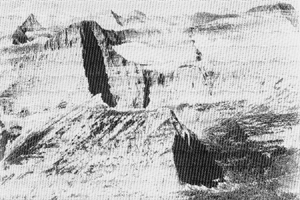
This 1925 photograph shows a tiny cirque glacier in
Glacier National Park, Montana, U.S.A (U.S. Air Force
photograph, at the WDC-A for Glaciology,
University of Colorado, Boulder, Colorado.)
http://www.solcomhouse.com/icecap.htm
Also called ice aprons, these glaciers cling to steep mountainsides. Like cirque glaciers, they are wider than they are long. Hanging glaciers are common in the Alps, where they often cause avalanches due to the steep inclines they occupy.

As the name implies, these are valley glaciers that flow far enough to reach out into the sea. Tidewater glaciers are responsible for calving numerous small icebergs, while not as imposing as Antarctic icebergs, can still pose problems for shipping lanes.
Lamplugh Glacier, in Glacier Bay, Alaska